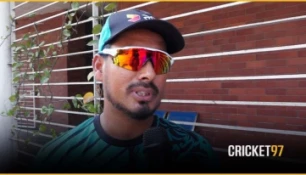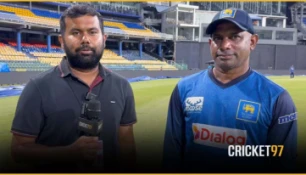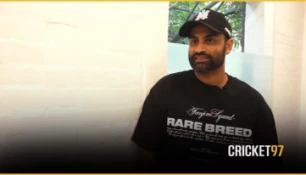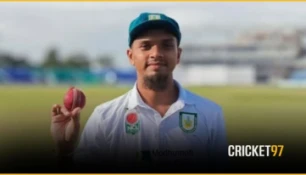Sylhet was modern in cricket even two eras ago - Ali Wasiquzzaman Chowdhury
97 Repoter: Mohammed Afzal
Publish: 1 year ago Update: 1 second ago-
1
Two BPL Matches Postponed Following Khaleda Zias Death
-
2
Australia Name Cummins, Hazlewood and David in Provisional World Cup Squad Despite Injury Concerns
-
3
Moulvibazar Sair Ali High School Abuzz as Nasum, Jabed and Ethan Brooks Are Felicitated
-
4
BCB to Launch New T20 League in Bangladesh
-
5
New Record in T20 History, Bhutans Sonam Yeshey Makes History with Eight-Wicket Haul

Sylhet was modern in cricket even two eras ago - Ali Wasiquzzaman Chowdhury
Sylhet was modern in cricket even two eras ago - Ali Wasiquzzaman Chowdhury
At one time, school cricket was a regular feature in Sylhet, and talent-hunting programs for young cricketers were also in place. Sylhet used to nurture players emerging from school cricket, and small-scale cricket practice facilities were available in neighborhoods. Many locations in Sylhet had cement wickets, where cricketers would practice outside the Sylhet District Stadium.
For cricketers like Tapash, Alok, Rajin, and Tanna, these facilities outside the Sylhet District Stadium were all they had. Despite these limited resources, they honed their skills, surpassed the national domestic cricket level, and showcased their best at the international level when their team needed them.
The Sylhet League was also vibrant, featuring not only national stars but also foreign players. Through exposure to both national and international stars, local players crossed the boundaries of Sylhet and made their mark on the national stage. Among them were Sylhet’s own stars, such as Parvez Ahmed, known as “Bhaijaan,” and Nasirul Alam Nahid.
Over time, Sylhet has seen improvements in infrastructure. It now has two international-standard stadiums. However, Sylhet has been unsuccessful in producing quality batters. Even with these infrastructural advancements, in the past decade, no batters from Sylhet, except Zakir Hasan and Zaker Ali Anik, have made it to the national team. Not only at the national level, but Sylhet Division’s team also faces a shortage of quality batters, to the point that they often have to rely on borrowed batters in the National Cricket League.
The Bangladesh Cricket Board (BCB) has not been focusing on grassroots talent scouting. Previously, the board would appoint development officers for this purpose, but in recent years, it has been hiring divisional coaches whose activities are often restricted to age-group teams.
Two decades ago, Sylhet had school cricket, and there were camps for talent-hunting. The Sylhet League was regular and considered the second-best league in the country in terms of quality. Reflecting on this, Ali Wasiquzzaman Anik remarked that Sylhet’s cricket was more advanced two decades ago. Despite infrastructure development, cricket in Sylhet has regressed in the last 10–12 years, with the league quality deteriorating and losing its past glory. Foreign stars, and even national ones, rarely appear anymore.
In an interview with Mohammad Afzal, Ali Wasiquzzaman Chowdhury discussed the issues surrounding Sylhet League, school cricket, and Sylhet cricket overall.
Questions:
Question: Sylhet’s bowling department is strong, but the batting side shows a different story. In the past two seasons, they came close to winning but had to settle for runners-up due to batting failures. Why is this happening?
Ali Wasiquzzaman Chowdhury: Many of our national players aren’t available all the time, which impacts us. When there’s no national duty, we would have Khaled, Zakir, Zaker, and Tanzim Sakib available for Sylhet. Ebadat is also trying to recover from injury. However, we are uncertain about whom we can rely on because of upcoming series like the one against South Africa. Zakir and Zaker’s absence will especially affect Sylhet’s batting. If we could get everyone together, we would have a strong chance in the National League. However, we have to accept reality and adapt. This is an opportunity for newcomers to prove themselves, and they too can someday play for the national team.
Question: Since the retirements of Alok and Rajin, Sylhet has relied on borrowed batters, especially after Alok Kapali left first-class cricket. This season, Pinak Ghosh and Maishukur Rahman Real have joined Amit Hasan on the Sylhet team. Why aren’t new batters emerging in Sylhet?
Ali Wasiquzzaman Chowdhury: The main reason is the lack of quality grounds. In the past 10–12 years, there has been a surge of pace bowlers in Sylhet. Developing a pace bowler doesn’t require high-quality wickets—they can practice spot bowling, train hard, and when they get a chance to play, they perform well. But producing quality batters requires good wickets, and there’s a severe shortage of such facilities in Sylhet.
Additional Questions:
-
Question on Sylhet League's Decline - Ali Wasiquzzaman Chowdhury explained how the loss of investment from local club owners and the rise of tape tennis tournaments for quick earnings among players have led to the league’s decline, affecting batting quality.
-
Question on School Cricket's Importance - School cricket was once the starting point for talents like Rajin Saleh, highlighting its importance in developing young cricketers through good coaching and regular camps.
-
Question on Political Influence in Committees - The interview touched on how political power often influences committee appointments, sometimes involving individuals with limited understanding of sports, which can harm cricket’s development in Sylhet.
Conclusion: Ali Wasiquzzaman Chowdhury concluded that for Sylhet to truly progress in cricket, it’s essential to decentralize the cricketing structure, provide consistent support at the grassroots, maintain high-quality wickets, and ensure that local players can access facilities that are currently reserved primarily for professional and international games.



















